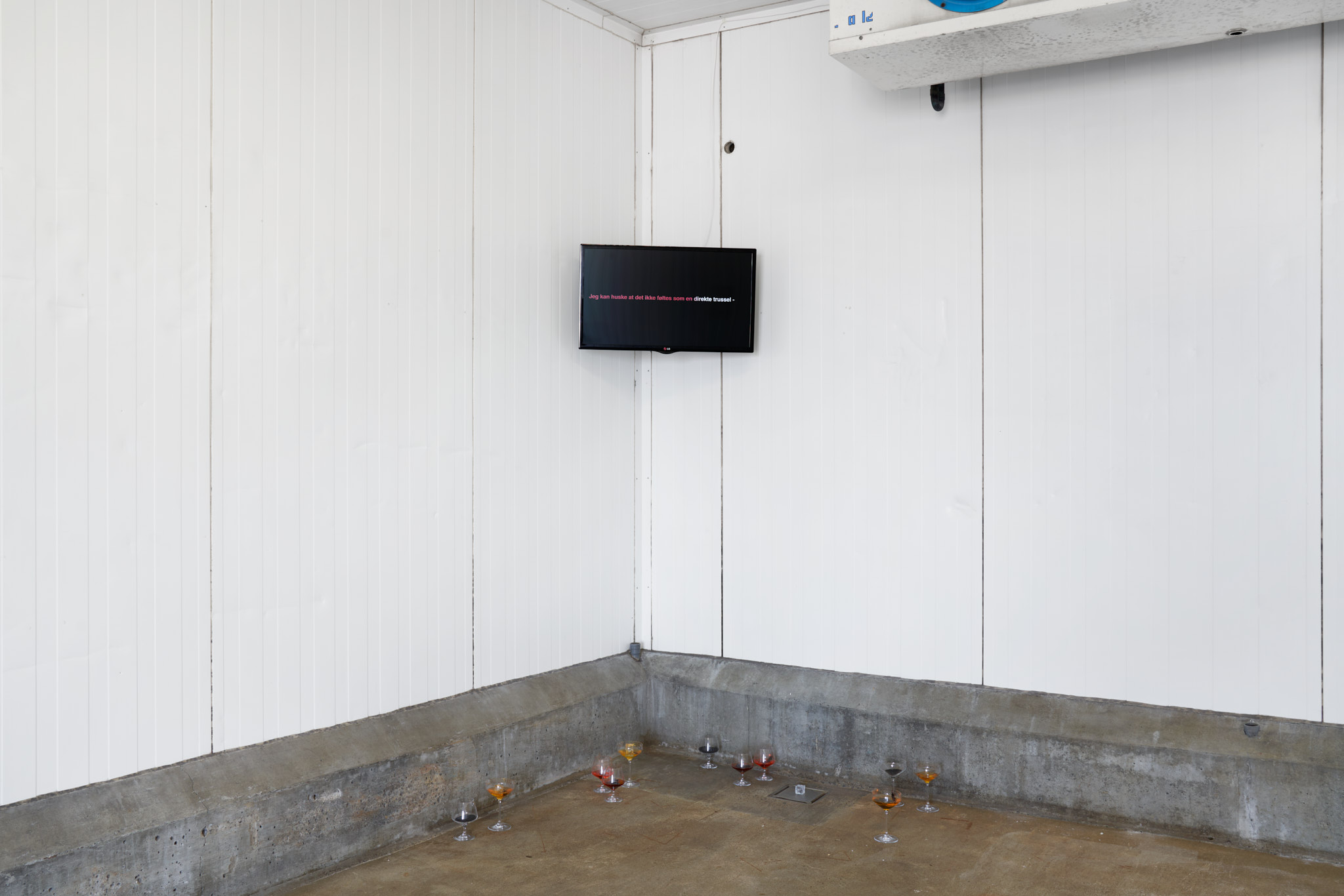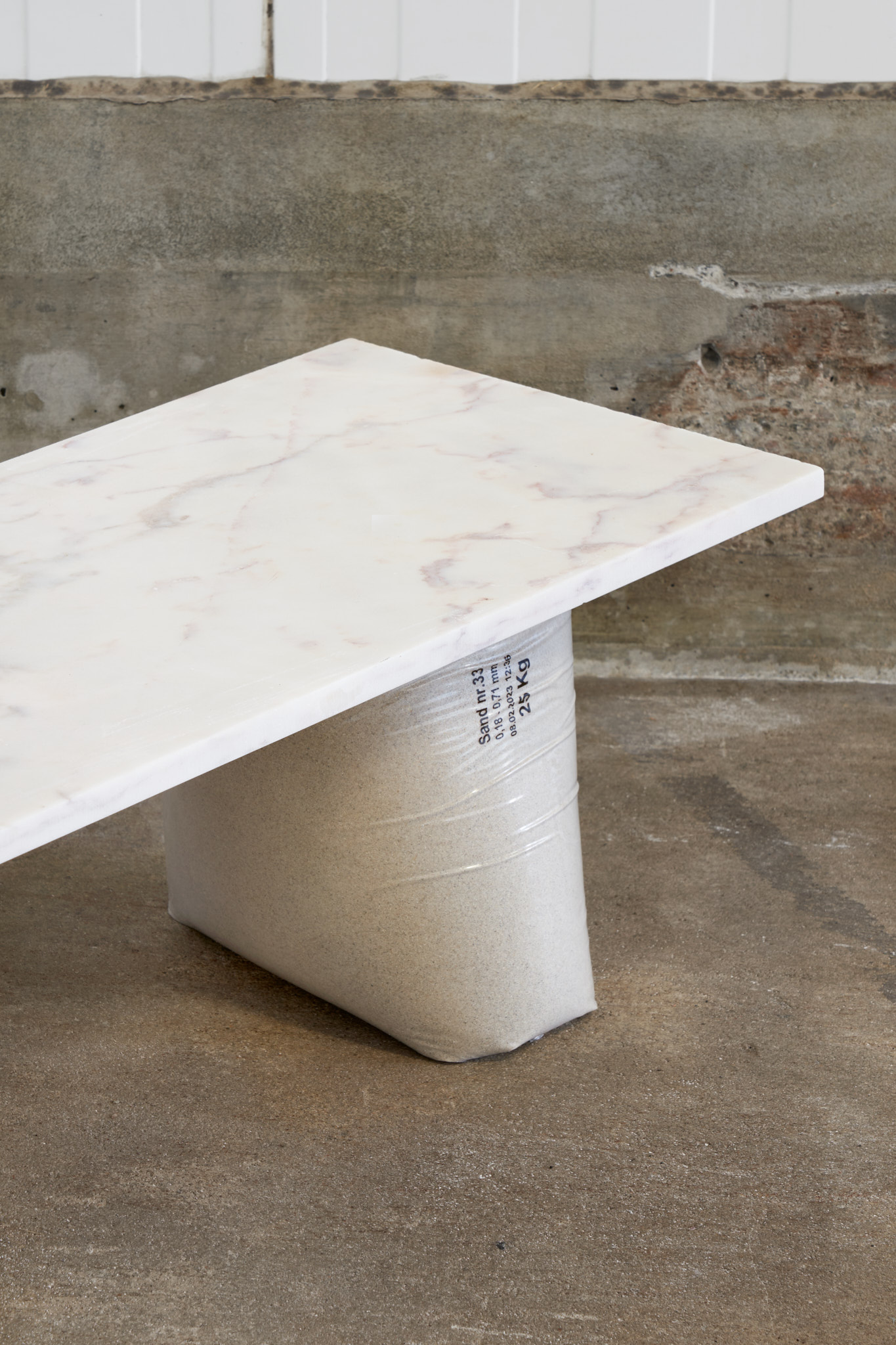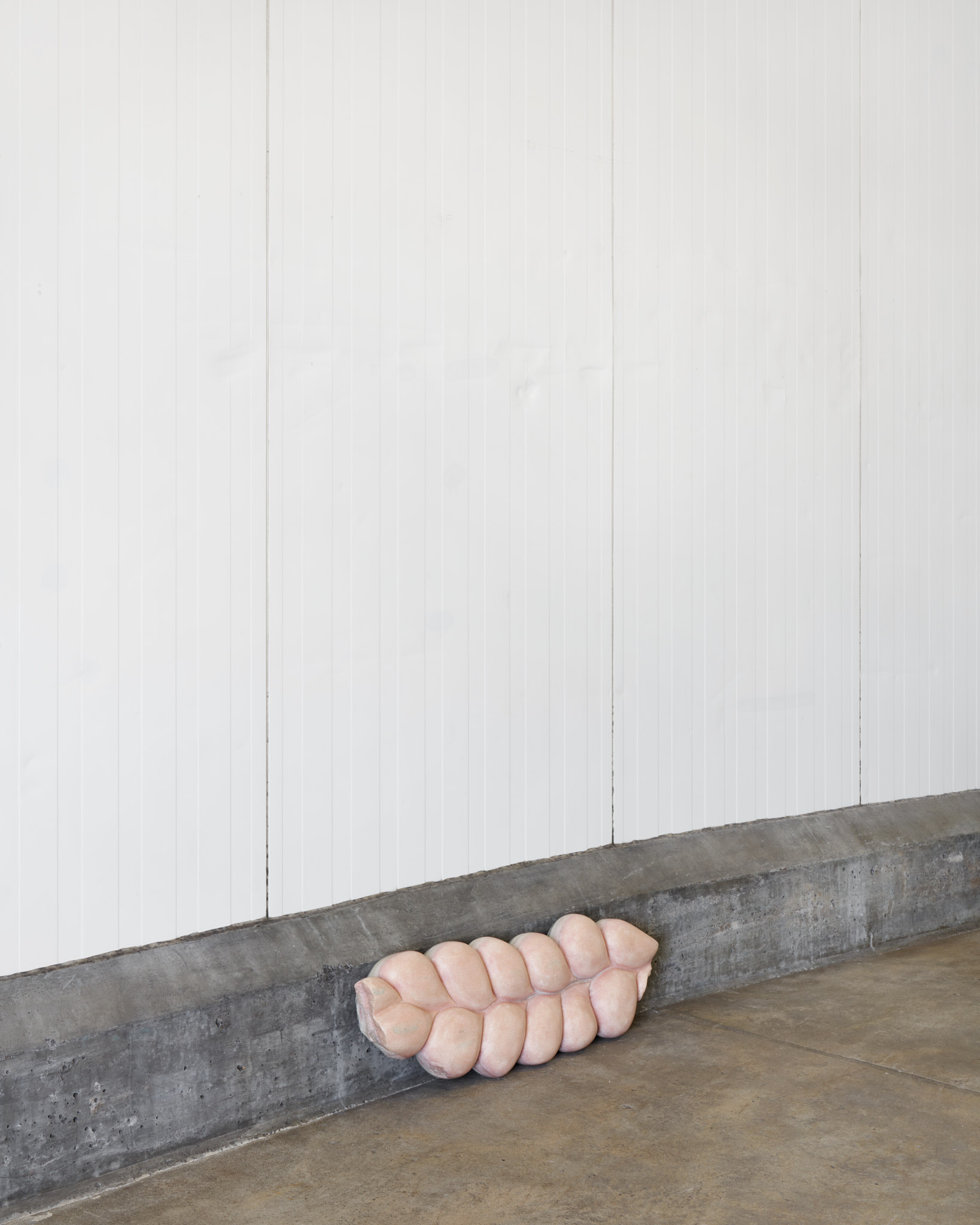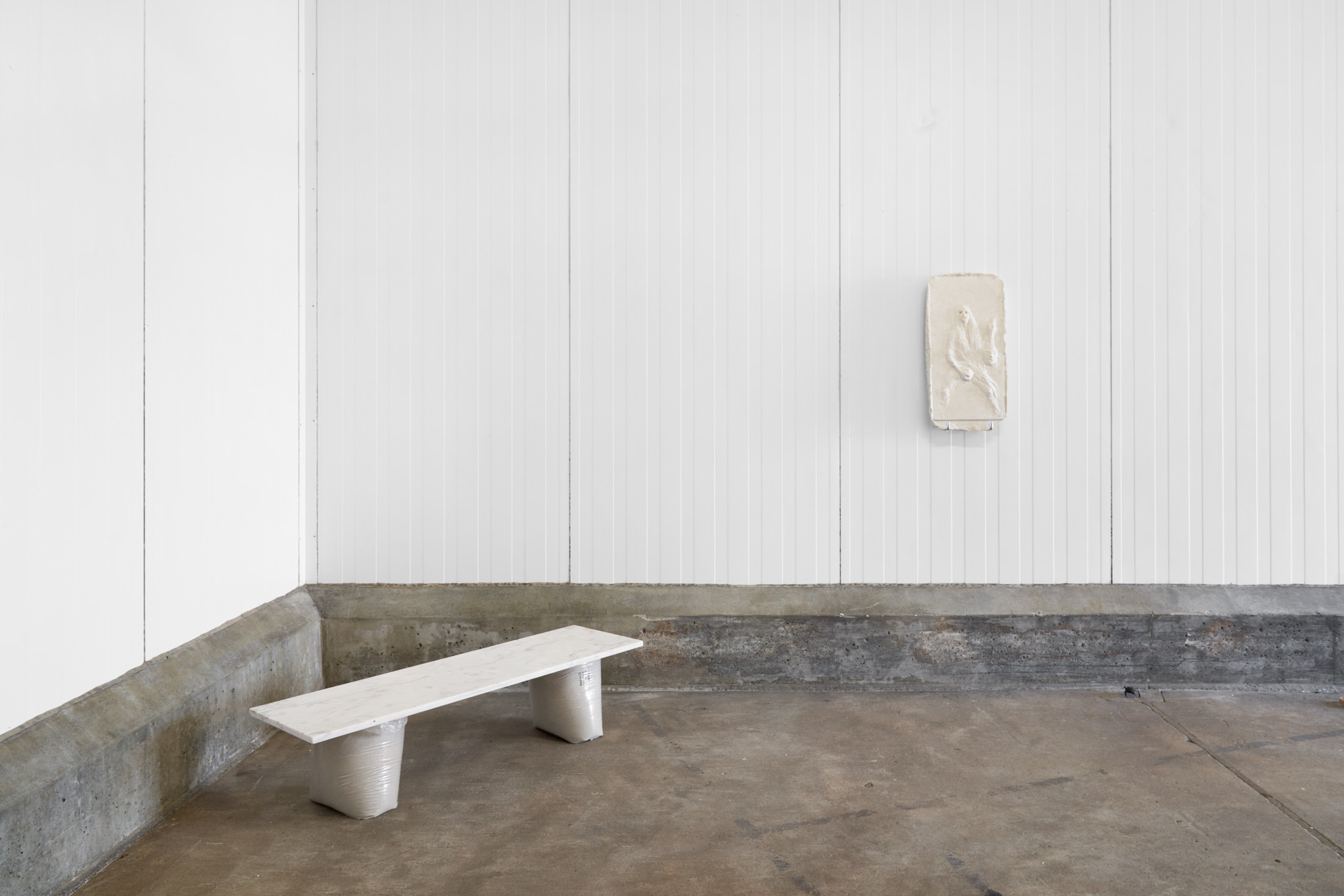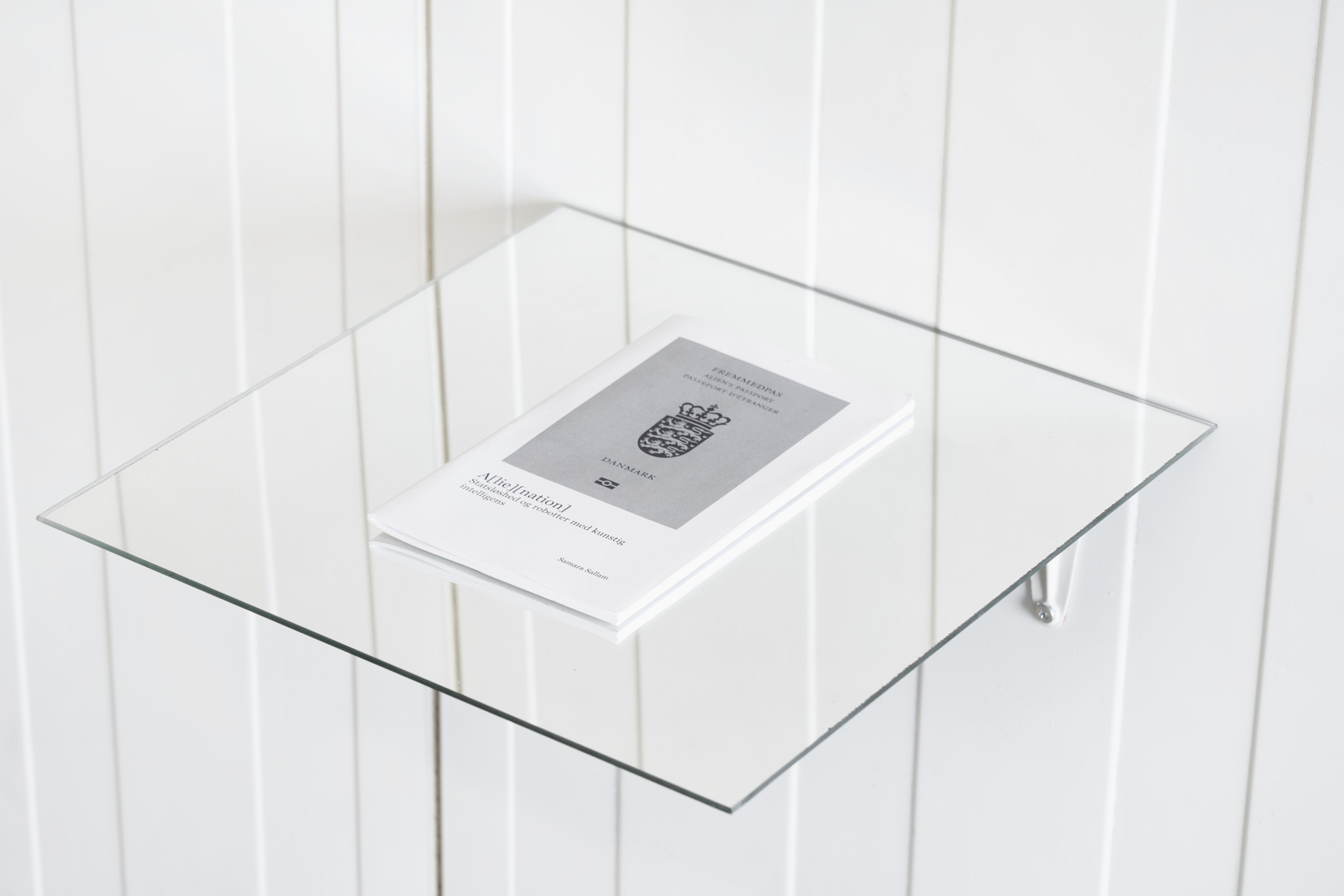
For this year's July exhibition Solastalgia at SOL, we are excited to present five artists, currently studying or recently graduated from one of the Nordic art academies: Samara Sallam, Sophia Luna Portra, Sidsel Winther, Sofie Amalie Andersen and Filip Vest. The artists are invited to revisit already existing works and reconsider them through topics surrounding the concept of Solastalgia - an unheimlich feeling best described as homesickness experienced while one is still at home. Due to the current climate crisis, more and more people around the world experience destructive changes in the environment they call home. Solastalgia is linked to the psychological health impact created by these changes – as well as to the distress of what is happening to our shared home, Planet Earth, as time goes by.
Samara Sallam shares her tragic experience of not being able to ever return to the place she calls home, within her works [A][lie][nation] and Floating Burial. The book [A][lie][nation], released in 2019, is a text about biopolitics and psyche, waving a relationship between stateless people and AI robots. Sallam is sharing a glimpse of her life as a stateless Palestinian without citizenship due to a political vacuum. She wonders how it can be that the AI Robot called Sophia, is has received a citizenship and a passport from Saudi Arabia, when she, along with 20mio other people, are have not been granted with anything but an Alien Passport and a status as Stateless. Sallam examines the connection between Western supremacy, colonization, racism and development of an AI industry, that is fuelled with money, gained through exploitation and discrimination. Floating Burial is a personalized burial object that deals with sarcasm about the dark reality of dying as a stateless. Neither a stateless person nor her body can be sent back to her homeland when passing away, which would normally be the case for people living abroad. Sallam’s Floating Burial is made out of one single piece of wood, that has been laser cut to make the wood bendable, so that it can be rolled and carried on her back. Besides the technical function of the cuts, they also reference the wounds inflected on the artist’s body through political exclusion, imprisonment and racism. The reference of water and floating on the surface brings a spiritual element that is always present in Sallam’s work, one way or another, as a carrier of dreams, wisdom, and feelings. Sallam is trained as a hypnotherapist, a journalist and as a visual artist from The Royal Danish Academy of Art. She was born in Damascus in 1991.
A plaster relief shows the image of a woman bringing her child into the world with one hand, while holding a decapitated male head in the other. Dolores is the title of the work and refers to the Latin word for pain (dolor). Dolores is also the name of a city in the state of Texas, which outlawed abortion in virtually all cases 2021. The artist Sophia Luna Portra visited Texas earlier this year when she played a concert at the renowned SXSW music festival, with her band Bona Fide. When the curator of Solastalgia asked her to recast Dolores, (first edition made in 2021), the answer was: "after Roe v Wade was overturned in 2022, I have not been able to access the material with the same calmness. The fact that women's rights are up for discussion, makes me furious”. Meanwhile, another work, Half Sick of Shadows (borrowed from The Lady of Shalott by Tennyson, 1832), a pair of hands made out of bees’ wax are to be found elsewhere in the room, as if somebody is lying underneath the exhibition space, on their way up through the concrete floor. Sophia Luna Portra is currently studying at the Royal Danish Academy. She is represented by the Copenhagen Gallery Maria Friis.
Sidsel Winther Hansen inhabits the window corner of the exhibition space with several works in various media; …like, if… is a cyanotype of two bodies dissolving into each other through breastfeeding. The image is induced by sunlight on cardboard made from composted cemetery bouquets. The cyan blue image reappears in the book Core Hydration; a text work existing as an attempt to contain liquid experiences that, by its very nature, will always be in motion: lactation, compost, coma, childbirth, and psychosis. The idea of a body as something enclosed is here dissolving into a leaking stream of consciousness, liquid, floating, ongoing. The work Cargo (the world is your oyster) is woven with natural dyed linen, wool from Icelandic sheep, nylon, fishing line and other boat equipment. From studying a semester abroad in Iceland, the artist became inspired and informed by the traditional cultural heritage that traces back to our earliest foremothers, whom throughout generations built up a self-sufficient society around sheep farming, wool and weaving. The title of the work references the slogan of the freight company DHL; possibly as a comment to the destructive forces connected to ships and shipping throughout times. From colonization to biodiversity loss, pollution, heating, and acidification of the oceans. The artist’s interest lies within hydrofeminist entanglements and interwoven co-dependency between all human and non-human bodies of water.
A related idiom of interlaced threads continue within a different material in the sculpture Braid (midnight marble) by Sofie Amalie Andersen. The work is carved out from a Norwegian tricolored stone, revealing layers of geological time, that no man, only minerals, have lived long enough to witness. The stone has however been obviously shaped by the artist, as is the case with every inch of planet Earth, that has by now been inevitably and irreversibly marked by mankind. The second sculpture by Sofie Amalie Andersen Untitled (wreck) is a bench inviting the visitors of the exhibition to take a seat if they dare. The bench is made from a heavy piece of marble, balancing on top of plastic bags filled with industrial sand. The hierarchy of the materials can be read through existential questions like: Who stands on the shoulders of who? Who must bear the burden? Which pros outweighs the cons? What is gravity anyway? Where is the balance between sand, the most consumed natural resource besides water, and plastic, the marvel of modernity, and one of the most damaging manmade materials on Earth? How long will the construction of society carry the heaviness we keep loading each other with? Do you load up or down? How long before somebody succumbs to the pressure? When will we reach the tipping point that forces us to change course?
Finally, Filip Vest invites you to step into a dystopian karaoke bar at a resort, where a couple is struggling to keep their relationship and the world from collapsing. Fragments from his previous solo show and performance Resort at the exhibition space Møstings, is displayed at SOL: a scenography consisting of cocktail drinks taken over by bugs, hotel towel swans covered in volcanic ashes and fragments of the storyline presented as a karaoke song in loop. The story unfolds between a couple at a holiday-resort, that they’re not able to leave and where a natural disaster seems imminent. The work subtly plays on our paralysis in the face of disasters, global warming, empathy and escapism in a late capitalist society. Resort is about wishing you were somewhere else, dreaming of being anywhere but here - about anxiety, escapism, and new identities, and about missing something before you have even lost it. Filip Vest’s installation reminds us how small and big crises affect each other: relationship dynamics and plate tectonics, volcano ashes and karaoke tracks.
–
In the exhibition Solastalgia the five contemporary artists have, in addition to their artistic practice, been selected because of their communal efforts and activities that rebel against an (art) world dominated by individualization, competition and loneliness.
For several years, Sofie Amalie Andersen has exhibited and promoted Danish and international artist colleagues at the exhibition space SOL, which she founded in 2019. Filip Vest was unning the project space Delfi during his education in Malmö, and recently he curated the literature festival Ubeskrevet at Thiemers Magasin. In 2022 Sidsel Winther Hansen organized Platform for Uncertain Future at LOKALE - an offer for newly graduated visual artists from the Danish and International art academies to show graduation works in Copenhagen. Among Samara Sallam's collaborations, The Herbal Garden in Sigrynsgade from 2021 should be particularly highlighted, which connects social classes across the road and inspires the collective's inherent potential for healing. In addition to her work as a visual artist and musician, Sophia Luna Portra takes care of her grandmother's artistic estate, such as part of the movement Hosting Lands by the Laboratory for Aesthetics and Ecology. In recent years, Portra has curated a number of extensive group exhibitions in art galleries, galleries and in public spaces.
The above efforts are mentioned due to a wish from the curator to shed light on how the most talented artists always work beyond themselves - with a belief that together we stand stronger, and a hope that solidarity will spread to all corners of society. In addition, there is an important point in not simply romanticizing the community which artists create and engage in - often the community is a vital necessity if you are to survive within an industry dominated by extremely precarious conditions such as unpaid labour, minimum wages and absolutely no security in terms of either maternity or illness. The network is created and affected by so many actors and aspects, and it is not an easy path to navigate, especially alone.
–
Solastalgia is curated by Malou Solfjeld for the exhibition space SOL as part of the 2023 exhibition program under the same title Solastalgia.
The exhibition can be visited every Saturday and Sunday between 12-15 or by appointment, until 30 July 2023.
The exhibition has been created with support from the Statens Kunstfond, Øernes Artfond, Den Obelske Familiefond, Bornholm's Regional Municipality and Møbelfabrikken in Nexø.












